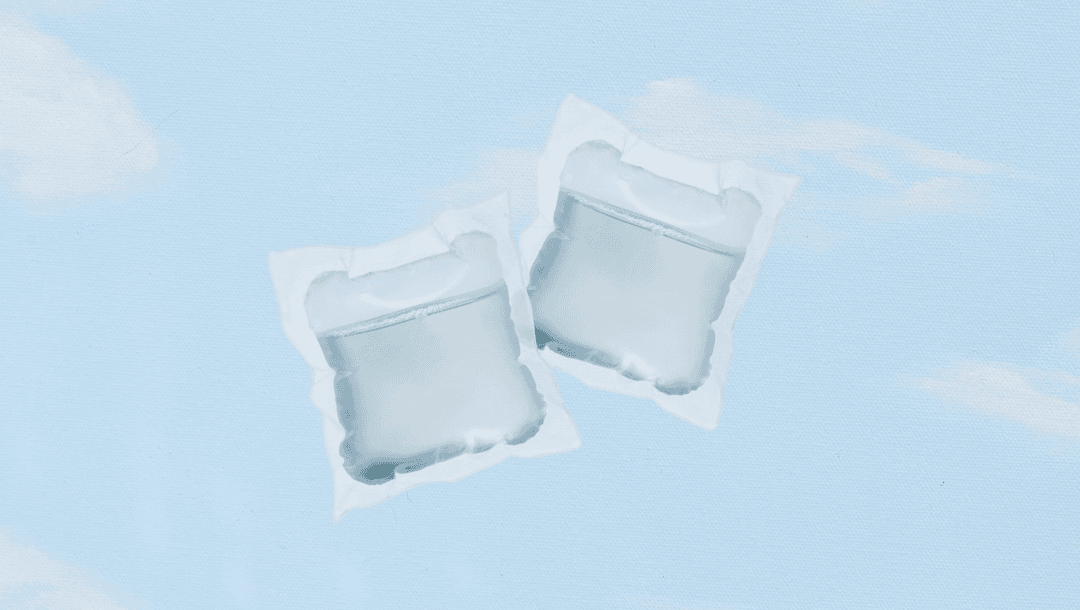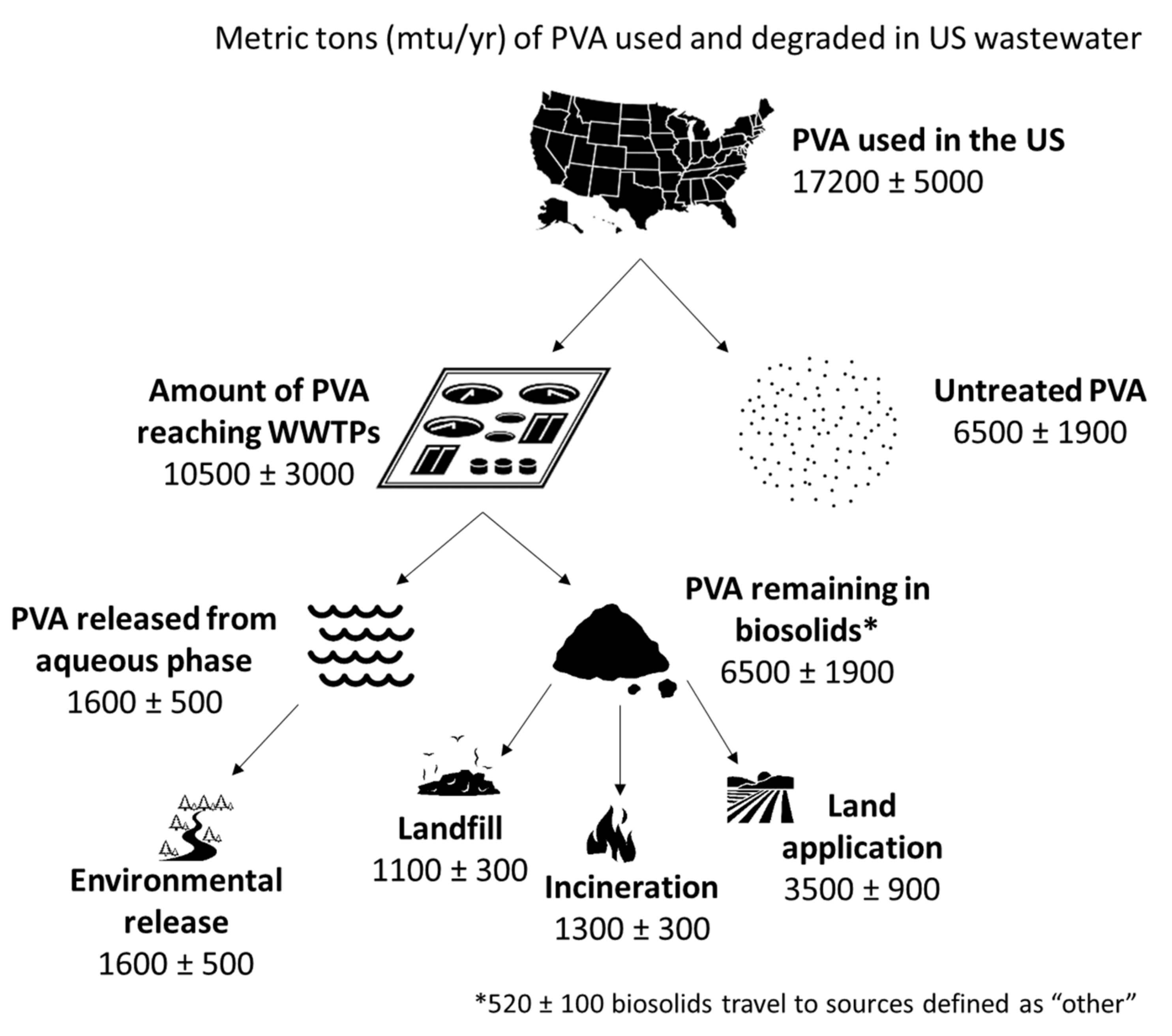What Is PVA And What Is Its Impact On The Environment?

Written by: John Mascari, COO and Co-Founder at Blueland
July 12, 2021
PVA (Polyvinyl Alcohol) is a synthetic plastic polymer found in many of our everyday products. PVA is often found in household items like dishwasher and laundry pods and sheets as a thin single-use plastic wrapping or woven into laundry sheets themselves. In the U.S. alone, research shows over 20 billion PVA wrapped dishwasher and laundry pods are used every year. While the plastic wrapping around these pods might seem innocuous, when it comes to PVA, there is more than meets the eye. A recent study published in the International Journal of Environmental Research and Public Health titled: Degradation of Polyvinyl Alcohol in US Wastewater Treatment Plants and Subsequent Nationwide Emission Estimate, shows that while PVA does dissolve, it doesn’t always biodegrade. We’re breaking down the naked truth about laundry and dishwasher pods, and unpacking the real implications of PVA.
Is PVA Plastic?
Yes. PVA stands for Polyvinyl Alcohol and is sometimes also written as PVOH. PVA is a synthetic plastic polymer that is often used to make thin layers of plastic wrapping and lining, like the wrapping of dishwasher and laundry pods. PVA used for dishwasher and laundry plastic pods is a type of plastic, and while it is designed to dissolve, it doesn’t necessarily disappear. The study suggests that over 75% of PVA persists in our waterways and our soil after it dissolves in laundry and dish washing machines, flows through wastewater and ultimately back into our environment.
Does PVA Biodegrade?
PVA is designed to dissolve in water and it can biodegrade. However, the study shows that conditioners necessary for complete biodegradation of PVA are extremely specific. In order for PVA to fully biodegrade it requires the presence of very specific microorganisms and enzymes to aid in the degradation process. In addition to these microorganisms, it also requires a specific amount of time in the wastewater water treatment facility.
In the U.S., most wastewater treatment facilities do not have all of the conditioners necessary for PVA to fully degrade. Either the microorganisms and enzymes are not present, or the wastewater containing PVA doesn’t spend enough time in the wastewater treatment facility to be adequately treated for degradation. So, if the PVA doesn’t biodegrade, where does it go?
The Path of PVA: From Home to Release
The PVA journey starts in the home. PVA wrapped laundry and dishwasher pods are washed down the drain and follow the path to WWTPs or wastewater goes untreated. In the U.S. an estimated 61% of PVA goes to WWTPs, and an estimated 37% remains untreated. This PVA is coming from homes, businesses and factories. PVA that is treated in a WWTP goes through the following process:
PVA in Wastewater Treatment Facilities:
Phase 1: Primary treatment:
In the primary treatment phase at a WWTP large solids are separated from the water that has entered the facility. In this phase, dissolved PVA is not typically separated from the wastewater. Because PVA is a water soluble particle with hydrophilic or “water loving” properties, it is difficult to separate PVA particles from the water in this phase. That means that water moves to the second phase and can still have dissolved PVA molecules attached.
Phase 2: Secondary treatment
If PVA were to biodegrade, it would likely take place in the secondary treatment phase. During the secondary treatment phase PVA interacts with bacteria and microbes to break down additional waste in the wastewater. In typical WWTP in the U.S. the specific bacteria and microbes needed to aid the degradation of PVA are not always present. If they are present, the water containing PVA is rarely in the presence of the bacteria and microbes needed to break down the PVA for long enough for the PVA to fully degrade.
Phase 3: Tertiary treatment
Once the wastewater has gone through the secondary treatment phase, the final phase is disinfection and filtration. In the disinfection phase it is possible for remaining PVA to be degraded, however the technology to execute that degradation is expensive, and rarely employed in WWTPs in the U.S.

Modeled PVA usage and emissions in metric tons per year (mtu/yr) in the US. Degradation of Polyvinyl Alcohol in US Wastewater Treatment Plants and Subsequent Nationwide Emission Estimate
After the three treatment phases, wastewater is released from WWTPs. According to the study, PVA is released into the environment as water or released as biosolids. If released as water, it has the potential to impact our waterways and impacts. If released as biosolids, it can find its way into landfills, our soil or to be incinerated. Over 65% of PVA released from WWTPs is released into our waterways or soil.
What Are The Environmental Implications Of PVA?
Research on PVA is just starting to gain traction, and more research is needed to determine the specific impacts of PVA on our environment. However, PVA is a plastic pollutant, finding its way into our waterways and soils. While further research needs to be done, the presence of intact or partially degraded plastic from dishwasher and laundry detergent pods in the environment has been documented.
Frequently Asked Questions
Keep Reading
Refill is the New Recycle
The perfect way to start cutting out single use plastic from your home.











